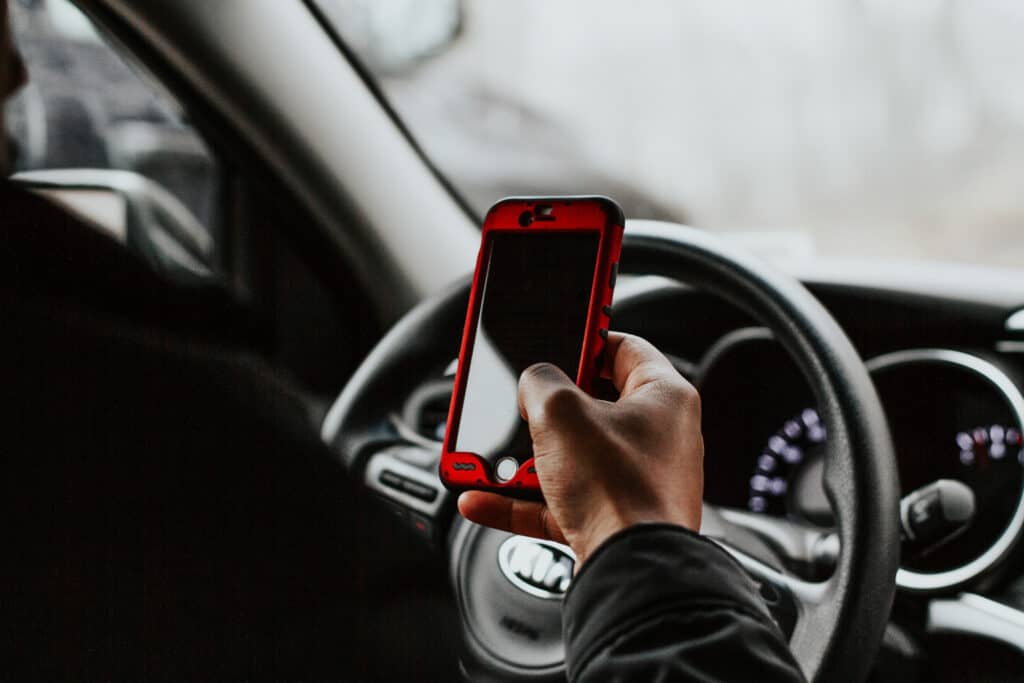
Legally Reviewed By: Robert M. Knowles
Attorney & Partner At Knowles Law Firm
Modern technology has significantly influenced road safety, both positively and negatively. While car safety technology like advanced braking systems and airbags has drastically reduced the likelihood of collisions and saved countless lives in car accidents, emerging distractions such as smartphones and infotainment systems have introduced challenges that increase accident risks. Technology plays a dual role, simultaneously reducing and contributing to traffic accidents over time.
Understanding the balance between these effects is essential for creating safer roads and leveraging advancements responsibly.
How Has Technology Decreased Traffic Accidents?
Advancements in Car Safety Features
The development of advanced safety features has been pivotal in reducing traffic accidents and improving outcomes for drivers and passengers. Technologies like seat belts, airbags, and anti-lock braking systems (ABS) have saved thousands of lives and reduced severe injuries. Seat belts alone have prevented hundreds of thousands of fatalities, according to the National Highway Traffic Safety Administration.
Some of the top vehicle safety technologies today include:
- Lane-keeping technology
- Traction control
- Advanced Brake Assist
- Safety Assist
- Blind-spot warning
- Auto cameras
- Automatic headlights
- Vehicle maintenance monitoring
- Telematics
Features such as collision avoidance systems in cars, sensors in cars for safety parking, lane-keeping assistance, and blind-spot detection have also become essential tools in preventing accidents.
Modern driving safety systems incorporate innovative measures like driver attention monitoring and advanced cruise control. These systems help address common causes of collisions, such as driver fatigue or distraction. Cars with lane assist, for example, help drivers maintain their position within lanes, significantly reducing the likelihood of side-swipe or run-off-road accidents. Additionally, cars with blind-spot cameras enhance visibility, reducing risks during lane changes.
The Role of Future Car Safety Technology
As manufacturers strive to develop future car safety technology, features like vehicle-to-vehicle communication and autonomous driving capabilities promise to revolutionize road safety. These advancements aim to reduce human error, a leading cause of accidents, and create a more coordinated and efficient traffic system. New safety features in cars, such as enhanced pedestrian detection and emergency braking, are already making a significant difference.
Highway safety systems designed for high-speed roads are another critical area of innovation. Automated braking systems, adaptive cruise control, and predictive collision detection contribute to safer highways. These technologies not only make driving safer but also reduce traffic congestion by minimizing sudden braking and improving traffic flow.
Need Legal Assistance? We’re Here to Help
Let our award-winning attorneys fight for the justice you deserve. Our team is dedicated to providing personalized legal representation for your unique situation.
- (402) 431-9000
Driving Risks Associated With Technology
Distractions From Emerging Technologies
While technology has the potential to save lives, it can also create new risks. Distractions caused by cell phones, infotainment systems, and other devices have become a significant contributor to accidents. According to the NHTSA, distracted driving led to 3,308 fatalities in the year 2022, with cell phone use being one of the most common distractions.
Driver-assist cars, while designed to improve safety, have their limitations. Features such as adaptive cruise control or automated parking can lead to an over-reliance on technology, causing drivers to lose focus or delay reactions in emergencies. For example, drivers using modern car safety features may assume they are immune to accidents, leading to complacency.
Challenges With Autonomous Vehicles
Autonomous and semi-autonomous vehicles have been promoted as the future of road safety, yet they come with significant challenges. Many accidents involving these vehicles result from a failure of human occupants to intervene when required. Overconfidence in technology, paired with the current limitations of self-driving systems, highlights the ongoing need for driver education.
Recent auto accidents involving autonomous vehicles reveal gaps in their ability to respond to unexpected situations. These incidents underscore the importance of continued innovation and rigorous testing before widespread adoption.
Balancing the Impact of Technology
How to Prevent Car Accidents With Technology
Technology must be used responsibly to maximize its potential in preventing accidents. Drivers should actively engage with their driver safety systems, ensuring they understand how features like collision avoidance and lane-keeping assistance work. Combining these systems with attentive driving is crucial to reduce risks.
Education about how to prevent a car accident using modern tools is equally important. For example, properly utilizing cars with driver-assist features can enhance safety but should never replace vigilance. Public campaigns on driving awareness of safety topics can help drivers better understand their responsibilities.
The Role of Regulation in Road Safety
Regulation is vital for ensuring that new car safety features meet rigorous standards before entering the market. Mandating technologies like automatic emergency braking and driver monitoring systems can reduce preventable accidents. Holding manufacturers accountable for defects also ensures that safety remains a priority.
Additionally, governments can encourage the adoption of advanced features by offering incentives for vehicles equipped with the best features. Incentives could make cars with the most safety features more accessible to the average consumer, resulting in a broader impact on road safety.
FAQ: How Modern Technology Affects Car Accidents Rate
Have car accidents increased since cell phones became popular?
Yes, the widespread use of cell phones has significantly contributed to the rise in distracted driving. Technological accidents linked to cell phone use have become a major safety concern.
What causes traffic accidents linked to technology?
Traffic accidents involving technology often result from distractions, over-reliance on driving safety systems, or misuse of infotainment tools. Proper education and responsible use can mitigate these risks.
Which cars have the most safety features?
Many modern vehicles are equipped with features such as collision avoidance systems, lane-keeping assistance, and blind-spot cameras. Researching safety ratings and vehicle safety topics can help identify the safest options.
How can we prevent car accidents with technology?
Using car safety technology responsibly and educating drivers about how to prevent road accidents are critical steps. Features like automatic braking and adaptive cruise control are most effective when paired with attentive driving.
What are the best car safety systems today?
The best cars with advanced safety systems should have lane-keeping assistance, adaptive cruise control, blind-spot cameras, and emergency braking systems. These innovations are essential for enhancing safety and reducing risks.
Technology has transformed road safety, offering both opportunities and challenges. Features like collision avoidance systems, lane-keeping assistance, and adaptive cruise control have made driving safer and reduce fatalities. However, risks such as distractions from cell phones and over-reliance on technology highlight the importance of responsible use. By combining advanced car safety technology with proper education and regulation, we can continue to improve road safety.
For those affected by recent auto accidents linked to technology, seeking guidance from an experienced Omaha personal injury attorney may help determine liability and explore legal options.

About Our Attorney
Robert M. Knowles
Attorney & Partner at Knowles Law Firm
Robert has tried cases in both state and federal courts and was selected as one of the top 100 litigation lawyers in Nebraska for 2014 by the American Society of Legal Advocates. Less than 1.5 percent of lawyers nationally are selected for this recognition. He is rated AV by Martindale-Hubbell which is the highest rating an attorney can obtain. He was also selected by Martindale-Hubbell as a 2019 Top Rated Lawyer.



 Menu
Menu
